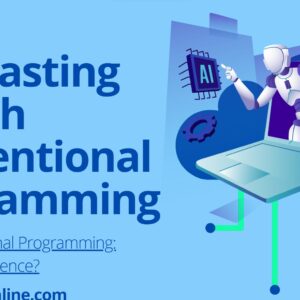China’s Trillion-Parameter Kim K2 Model Is Changing the Game for Open-Source AI
Imagine an AI that not only talks but plans your entire concert trip, books flights and hotels, and even launches a tracking website—all on its own. Sounds like sci-fi? It’s the new reality with Kim K2, a cutting-edge trillion-parameter open-source model recently introduced by China. This breakthrough is setting new standards for large language models (LLMs), delivering powerful agentic capabilities and solving persistent training problems that have stumped AI researchers for years.
This analysis is based on insights from a recent video breakdown, highlighting Kim K2’s technical innovations and real-world potential.
—
What Makes Kim K2 Stand Out Among Large Language Models?
In the crowded world of LLMs, size isn’t everything. Kim K2 is not just large—it’s smartly engineered. While boasting a trillion parameters, the model operates with a clever “mixture of experts” system. Here’s the secret: instead of turning on all the neurons at once (which is computationally costly and often redundant), it dynamically activates only about 32 billion of its best-suited parameters per task. It’s like having a panel of specialists and calling on just the right ones for what you need.
This architecture enables Kim K2 to deliver top-tier performance while keeping costs remarkably low—around 15 cents per million tokens. For context, that’s well below most leading commercial models.
How Kim K2 Solves Training Stability—The Hidden AI Challenge
Training gigantic models can be like balancing a house of cards. Without stability, parts of the model overfocus, gradients explode, and the entire neural network can collapse—wasting months of training time and massive compute resources. Kim K2 tackles this head-on with two innovative techniques: QK Clip and Moan Clip.
– QK Clip limits how intensely the model pays attention, preventing it from obsession over tiny details.
– Moan Clip keeps the gradient values stable during backpropagation, ensuring smooth learning.
These fixes aren’t just theory; the results speak volumes. On a demanding software engineering benchmark, Kim K2 scored a staggering 65.8%, nearly doubling DeepSeek V3’s 38.8%, and matching performance levels of Claude Opus 4—a prominent AI powerhouse.
Why Agentic Capabilities Matter: The Case of Planning Coldplay’s 2025 Concert Trip
Beyond numbers, Kim K2’s agentic capabilities give it a practical edge. For example, when asked to plan a Coldplay concert trip, the model didn’t merely spit out suggestions. It actively:
– Checked live schedules
– Booked optimal concert times
– Found flights and hotels
– Added the itinerary to your calendar
– Created a tracking website for real-time updates
This level of autonomous task execution is a big step toward AI that genuinely assists in daily life—transforming it from a passive respondent into a proactive agent.
Large Context Windows and What They Mean for Complex Tasks
Another standout feature: Kim K2 supports a massive 128,000-token context window. In plain English, it can read and understand huge documents or multi-layered conversations without losing track. This makes it incredibly useful for fields like law, academia, or software development, where context is king.
The Reality Check: Limitations and Open-Source Impact
Of course, Kim K2 isn’t running on your home laptop anytime soon. It demands extremely powerful hardware, which currently limits accessibility. But the fact it’s open-source pushes the needle for transparency, customization, and democratization in AI—a crucial counterbalance to proprietary models like GPT-4.
Its emergence signals that open models are closing the performance gap with closed systems, challenging tech giants and fostering innovation across communities.
Why This Matters for AI Ethics and Future Innovations
Kim K2’s architecture and agentic attributes underscore important discussions about AI autonomy and responsibility. As models gain more decision-making power, transparency about how they operate—and who controls them—will become critical.
Catching up on AI news and ethics is more important than ever, especially when innovations like Kim K2 blur the lines between tools and partners.
—
Final Thoughts: Are We Ready for the Next Generation of AI?
Kim K2 reminds us that AI’s future isn’t just about bigger models but smarter, more stable, and more capable ones. The blend of technical prowess with practical agentic skills hints at a future where AIs could meaningfully augment complex tasks without constant human oversight.
As open-source projects like Kim K2 push boundaries, staying informed and critically engaged is our best bet in shaping ethical, responsible AI progress.
Ready to dive deeper? Explore more about the evolving AI landscape and the ethical questions it raises—because the AI revolution is just getting started.
See more AI news and ethics topics
—
Source: Video transcript analysis on Kim K2, an open-source trillion-parameter AI model from China.
—
📢 Want more insights like this? Explore more trending topics.

